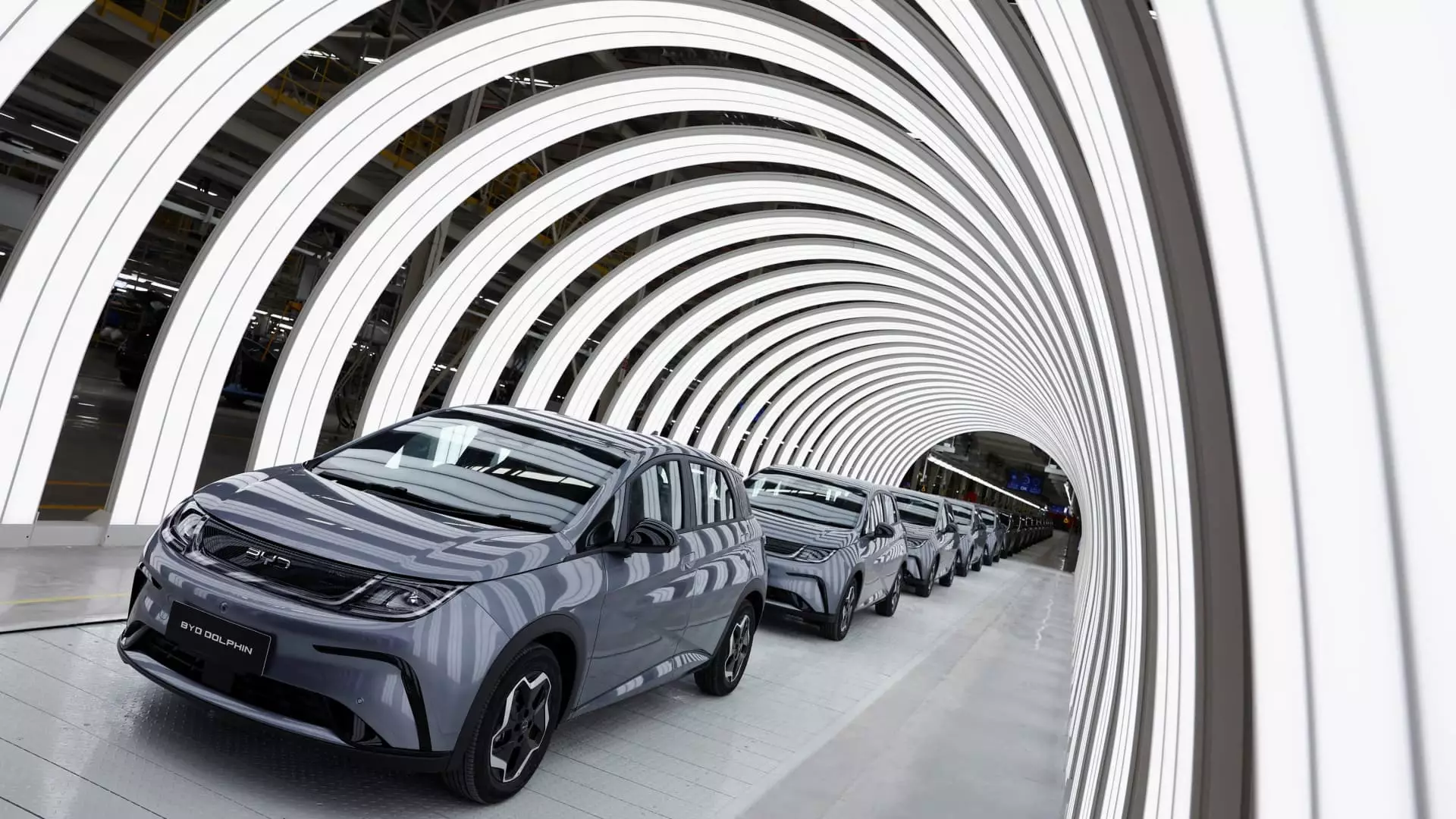In recent weeks, BYD, one of the world’s leading electric vehicle manufacturers, has taken significant strides in enhancing its reputation in the automotive market, particularly with its new driver-assistance systems (ADAS). As this ambitious project rolls out, there is increasing optimism among industry analysts regarding the prospects for BYD, as well as its suppliers and partners. This development not only reflects BYD’s commitment to innovation but also highlights the evolving dynamics within the competitive electric vehicles (EV) industry, especially in China.
The recent introduction of BYD’s driver-assistance system has positioned the automaker strategically within a rapidly changing market landscape, characterized by heightened competition among EV manufacturers. With the launch of this new system for a variety of vehicles—including budget-friendly models priced below 70,000 yuan (approximately $9,600)—BYD is making advanced automotive technologies accessible to a broader consumer base. This approach aligns with the growing demand for not just electric vehicles, but smart vehicles, which incorporate sophisticated driver-assistance features as a central selling point.
Analysts have pointed out that suppliers backing BYD in this endeavor are likely to see their fortunes rise in congruence with the automaker’s success. The integration of cutting-edge artificial intelligence capabilities via DeepSeek underscores how crucial technology partnerships have become in enhancing the driving experience. These moves by BYD suggest that there is a push for a more integrated technological ecosystem, whereby both automaker and component suppliers can gain from each other’s innovation and market growth.
Sophisticated driver-assistance systems have transitioned from niche features to pivotal components in attracting customers in a competitive market like China, where numerous automakers vie for consumer attention. The swift rollout of BYD’s latest features has undoubtedly put pressure on other car manufacturers to expedite their own technological advancements in driver-assist capabilities. The conclusion drawn by analysts predicts a domino effect, potentially unleashing increased demand for smart driving-related components across the entire auto market—thus catalyzing a wider evolution in automotive technology.
Moreover, the implications of outlet dynamics are clear. Tesla, a pioneer in ADAS technology with its Full Self-Driving feature, has struggled to maintain its stock prices following the news of BYD’s noteworthy advancements. This indicates that the barriers to competition are steadily lowering, eroding the monopolistic edge that early entrants had enjoyed in the electric car segment. The entry of domestic players like BYD into the realm of advanced driver-assist systems illustrates the growing importance of innovation and technology not just for individual companies, but for the industry as a whole.
Investment analysts are increasingly optimistic about the financial trajectories of companies affiliated with BYD due to its commitment to driver-assistance technology. BYD Electronics, a subsidiary of BYD focused on producing components for driver-assistance systems, is a standout candidate among analysts. With recently raised price targets and enhanced earnings projections, the excitement surrounding BYD’s ascendance appears contagious. Observations indicate that more than three million BYD vehicles are expected to adopt advanced driver-assist features this year alone, which, consequently, implies significant revenue growth for parts suppliers.
Furthermore, chipmakers such as Horizon Robotics are anticipated to benefit substantially from this growth momentum. Their Journey 6 chipset series is already projected to experience a remarkable rise from three percent of their revenue this year to forty percent by 2027. The prediction showcases the profound interconnectedness between automotive innovation and semiconductor technology, framing the semiconductor industry as an essential driver of growth within the EV sector.
Nonetheless, this burgeoning landscape is fraught with challenges, especially political and regulatory hurdles that can influence technology transfer and supply chain dynamics. For instance, Hesai Tech, a lidar developer integrated into BYD’s driver-assist framework, finds itself in a complex position amid scrutiny and allegations regarding its ties to the military. The evolving political landscape could impact partnerships and limit the potential for seamless expansion into global markets.
BYD’s foray into advanced driver-assistance systems is more than just a technological venture; it symbolizes a broader shift in the electric vehicle market landscape. With analysts supporting the notion that this initiative could lead to substantial gains for both BYD and its suppliers, the evolving dynamics of the automotive industry call for a close examination of technological and regulatory shifts that could redefine the sector. Going forward, as players like BYD continue their quest for innovation, the landscape will undoubtedly evolve, paving the way for new opportunities and challenges alike.


Leave a Reply